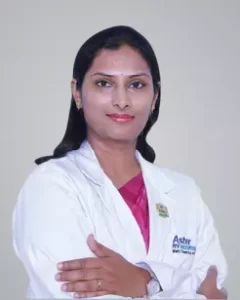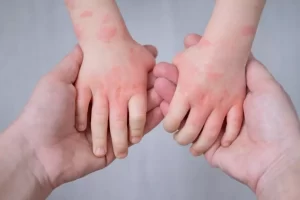
- We were facing three major challenges before undertaking the surgery: Dr. Rajat Mahajan
- 140-degree left side scoliotic curve of the spine
- Malignant hyperthermia, a rare (only 1/100,000 may have this condition in India), but life-threatening, inherited disorder triggered by certain anaesthetic agents
- Usage of anaesthesia during the surgery to avoid triggering hyperthermia
- Dantrolene, the only medicine that can stabilize malignant hyperthermia in an emergency was imported from Germany as it was not readily available in India.
- A previous attempt of corrective surgery in another hospital in 2015 had to be abandoned as the patient’s body temperature soared to 108-degree Fahrenheit – he was barely saved after a 13-day stay in intensive care.
Doctors at the Indian Spinal Injuries Centre (ISIC), New Delhi corrected the 140-degree left side scoliotic curve of the spine (a physical deformity where the spine resembles an “S”-like or “C”-like shape) in 12-year-old Kinshuk Swalkar despite a high risk of death due to malignant hyperthermia, a rare, but life-threatening, inherited disorder triggered by certain anaesthetic agents.
They highlight that since dantrolene, the only medicine that can stabilize malignant hyperthermia in an emergency, is not readily available in India, a previous attempt of corrective surgery in another hospital in 2015 had to be abandoned as Kinshuk’s body temperature soared to 108-degree Fahrenheit – he was barely saved after a 13-day stay in the intensive care. This time, doctors at the Indian Spinal Injuries Centre chose to delay the surgery and wait till the medicine is imported from Germany to ensure Kinshuk can enjoy his favourite game, cricket, from October.
“Kinshuk was first brought to ISIC in January. We were facing three major challenges before undertaking the surgery. The first was his malignant hyperthermia. Since he has a history, operating on him without having dantrolene on standby was out of question – the condition has a very high mortality rate of 80 per cent. With the emergency drug dantrolene, mortality rate can be brought down to 2 per cent. The second challenge was the magnitude of structural deformity – it was not possible to correct the huge 140-degree Cobb angle (the degree of side-to-side spinal curvature) and pelvic obliquity (a misalignment of the pelvis where one hip is higher than the other) at one go. The third was how to use anaesthesia during surgery since the traditional method would have triggered hyperthermia. Since we had to wait for the arrival of dantrolene, we utilised this time to put Kinshuk on halo gravity traction (a technique to pull the head and spine upward by stretching the spine slowly) for 3 weeks in the first week of February that improved the curve to 100 degree. This also helped to address the iliocostal impingement, a painful disabling condition in which ribs start to touch the iliac crest (hip bone). The remaining curve and misalignment of hip were corrected with spinal fusion from vertebrae D2 to pelvis during a 6-hour-long surgery in the first week of March,” says Dr Rajat Mahajan, Spine surgeon, Indian Spinal Injuries Centre, New Delhi.
“As anesthesiologist’s, this was a challenging case, not only because of Kinshuk being a pediatric case with increased risk of developing Malignant Hyperthermia, but also due to potentially long surgery in prone position, risk of bleeding and requirement of Intensive Care after the surgery. Since inhalational anaesthetic agents and Suxamethonium are the trigger for the rare condition, we chose not to use these agents for General Anaesthesia as is done commonly. Instead, we opted to use Total Intravenous Anaesthesia (TIVA) in which intravenous anaesthetic agents are used to give anesthesia. Meticulous vital function monitoring was done throughout the procedure. Dantrolene was kept as standby to meet any catastrophe. This plan worked well in the patient’s favour and he remained stable throughout the peri-operative period. Patient’s body temperature remained under control.” says Dr H K Mahajan, Chief of Anaesthesia, Indian Spinal Injuries Centre, New Delhi.
Scoliotic deformities have a genetic root and curve of more than 100 degrees cause cardiopulmonary problems and may reduce life expectancy if not addressed in time. However, doctors say absence of emergency drugs like dantrolene in India and importing such drugs can add to the overall cost of the surgery – Kinshuk’s parents had to spend about 4 lakhs for the medicine.
“Malignant hyperthermia in India is rare – only 1 / 100,000 may have this condition that can trigger fatal reactions such as muscle rigidity and metabolic acidosis during surgery. Containing such situations in an operation theatre is possible only with the help of dantrolene that is not available with hospitals though the first death in India, potentially caused by malignant hyperthermia, happened in 2001. There is no way to determine beforehand whether the patient has the condition unless anaesthesia is administered or a genetic testing is done. Anaesthesia cannot be administered without a reason and genetic testing is still not very popular among Indians. Besides, malignant hyperthermia can occur in dental clinics and intensive care units as well. Therefore, it is imperative to have such medicines available at hospitals and we urge the government to make provisions for availability of dantrolene that can help reduce mortality during surgery significantly,” says Dr. HS Chhabra, Medical Director & Chief of Spine Indian Spinal Injuries Centre.
Expressing their happiness, parents of Kinshuk said, “We are thankful to Indian Spinal Injuries Centre for giving a new life to our son. We were highly disappointed as other hospitals were not ready to take this case. We read about ISIC performing such critical surgeries on the internet and got in touch with them. After visiting ISIC, we had a hope that our son will be normal soon. Now, he will play cricket like other normal children after six months.”








